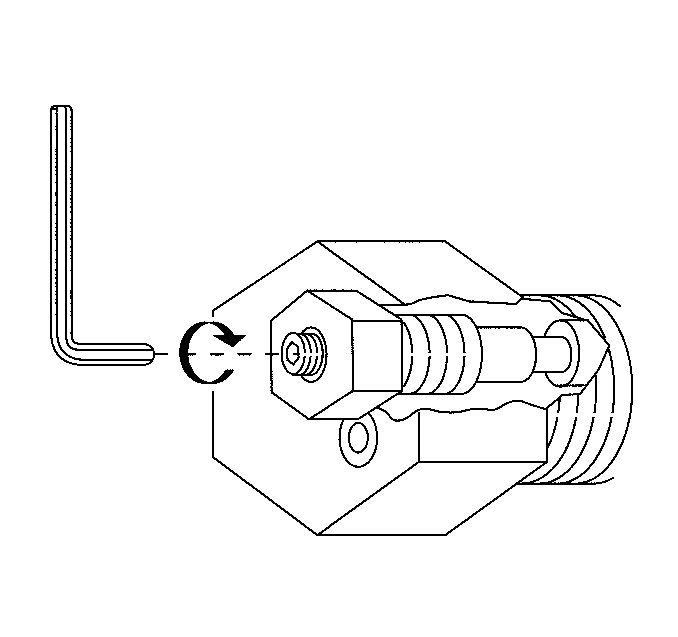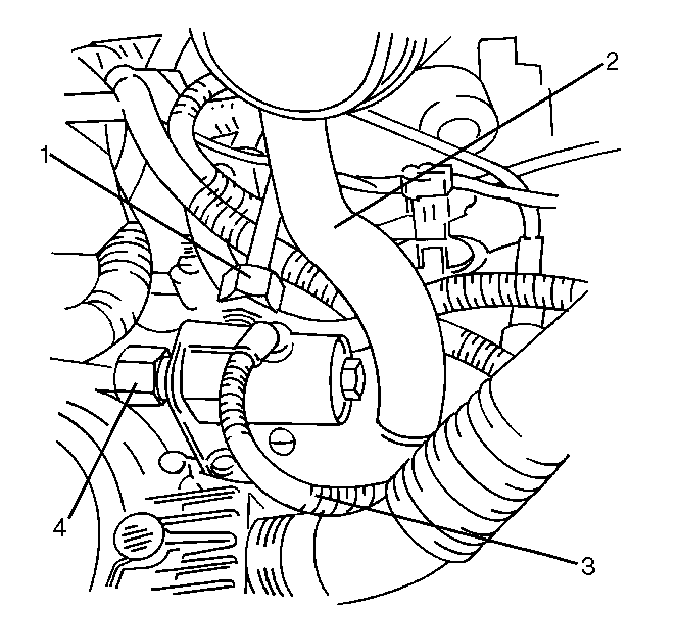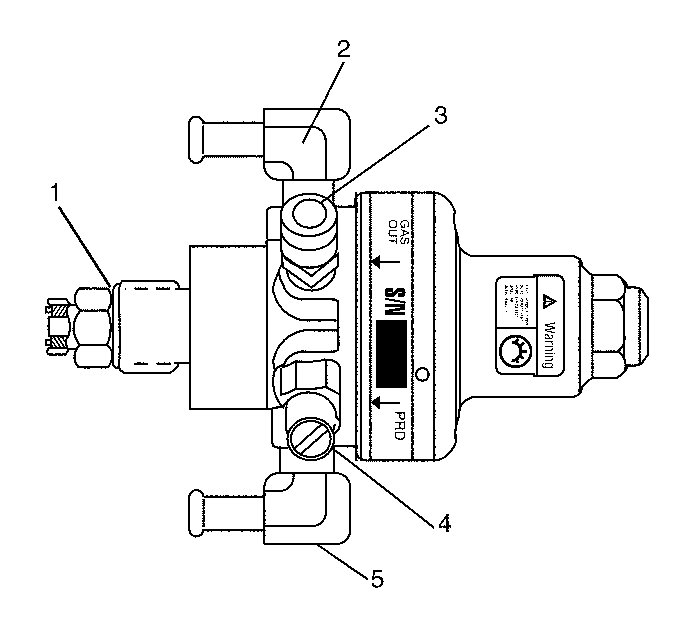Perform this procedure only after approved diagnostic procedures have isolated a CNG system component replacement or CNG system components require removal for other vehicle repairs. This vehicle is designed to start and operate on CNG.
A switch-over to gasoline (the FIL is illuminated) should only occur under the following conditions:
- Using a scan tool communicate with the AF ECU.
If communication cannot be established and the
Alternative Fuels (AF) Powertrain On Board (OBD) System Check
has already been performed proceed to
step 7 .
- Store the DTC Information for any AF ECU DTCs that may be set.
- Clear all AF ECU DTC Information and then turn the ignition OFF.
- Start and idle the engine.
Ensure the engine is operating on CNG by observing that the fuel illumination lamp (FIL) is OFF and that both the NGO Enable Output and the NGO Enable Input scan tool displays (Engine Data-Alt. Fuel) indicate
alternative fuel.
If the engine fails to operate on CNG or start at all, proceed to step 7 .
- Using the scan tool, select the High Pressure Lock-Off output control.
- While the engine is operating on CNG close the High Pressure Lock-Off and observe the Fuel Pressure Sensor parameter on the scan tool.
If the Fuel Pressure Sensor parameter fails to decrease proceed to step 7 .
When the engine stalls or a switch-over to gasoline is observed, perform the following:
| 6.1. | Turn the ignition OFF. |
| 6.2. | Remove the CNG 20 amp fuse in order to prevent a CNG prime pulse from occurring. |
| 6.3. | A small amount of CNG will remain in the fuel lines and components. Slowly open the fittings in order to release any remaining pressure when disconnecting a fuel line. |
| 6.4. | Fuel Pressure Relief for the CNG system is now complete. Proceed to step 12 . |

- Close the manual lock-down screw located on the HPL manual shut-off fitting by rotating the allen screw
clockwise until fully seated. Refer to
CNG Fuel Tank Cover Replacement
in Body Rear End in order to gain access to the HPL.
Caution: Unless directed otherwise, the ignition and start switch must be in the OFF or LOCK position, and all electrical loads must be OFF before servicing
any electrical component. Disconnect the negative battery cable to prevent an electrical spark should a tool or equipment come in contact with an exposed electrical terminal. Failure to follow these precautions may result in personal injury and/or damage to
the vehicle or its components.
- Turn the ignition OFF and disconnect the negative battery cable.
Caution: When relieving the Compressed Natural Gas (CNG) fuel system pressure,
take the following precautions in order to prevent fire and personal injury:
| • | Vent the CNG fuel system in a well ventilated work
area. |
| • | Keep sparks, flames, and smoking material away from the area. |
| • | Wear the appropriate hearing protection during the venting procedure.
A sudden pressure loss from an uncontrolled gas leak can cause hearing damage. |

- Slowly loosen the fuel line fitting at the LPL INLET port (1) several turns. Do NOT remove the fitting.
- If fuel is not venting with the LPL inlet fitting loosened, relieve fuel line tension by pulling the line away from the LPL.

- After fuel has stopped venting at the LPL fitting perform the following:
| 11.1. | Slowly loosen the fuel line fitting at the HPR INLET port (1) several turns. Do NOT remove the fitting. |
| 11.2. | Relieve fuel line tension by pulling the line away from the HPR. |
| 11.3. | Fuel Pressure Relief for the CNG system is complete when the fuel line at the HPR inlet port (1) can be pulled away from the O-ring face seal and fuel fails to vent. |
| | Caution: Natural gas is stored under high pressure. If a leak occurs, the high
pressure could cause a personal injury. In order to prevent Compressed Natural
Gas (CNG) fuel leaks, always replace the CNG fuel system O-rings
during service.
|
| 11.4. | Replace the O-ring face seals at all fittings that were disconnected or loosened. |
| 11.5. | After all necessary repairs are complete perform the following: |
| 11.5.2. | Open the manual lock-down screw located on the HPL manual shut-off fitting by rotating the allen screw counter-clockwise until fully seated on any vehicle that does not require venting of the CNG fuel TANK. |
Leave the manual lock-down screw CLOSED on any vehicle that will require CNG fuel TANK venting.
Important: If the service necessary for the vehicle requires that the ignition be turned ON with CNG components or lines disconnected, remove the CNG 20 amp fuse in order to prevent CNG fuel venting during an ignition ON
prime pulse.
- If the service necessary for the vehicle requires the CNG fuel TANK be relieved of all internal pressure, refer to the
Fuel Tank Venting
.



